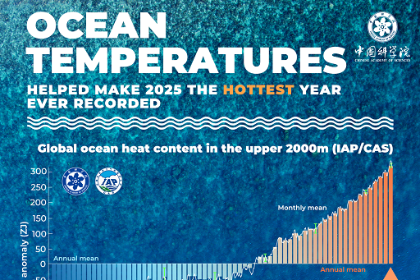Holistic remedies


Priority should be given to development financing and economic growth when addressing the debt problems of developing nations
Editor's note: The world has undergone many changes and shocks in recent years. Enhanced dialogue between scholars from China and overseas is needed to build mutual understanding on many problems the world faces. For this purpose, the China Watch Institute of China Daily and the National Institute for Global Strategy, Chinese Academy of Social Sciences, jointly present this special column: The Global Strategy Dialogue, in which experts from China and abroad will offer insightful views, analysis and fresh perspectives on long-term strategic issues of global importance.
According to statistics released by the World Bank, the total external public and publicly guaranteed (PPG) debt of developing countries reached $3.49 trillion in 2021, of which bilateral debt, official multilateral debt and commercial debt accounted for 13 percent, 23 percent and 64 percent respectively. In addition, the debt of developing countries has more than doubled during the period from 2011 to 2021. With the rapidly growing debt liabilities of developing nations, a shift in debt composition, and underlying problems plaguing the current debt resettlement mechanism, the world faces an uphill battle to solve the debt problems.
First, the debt settlement mechanism of the Paris Club is problematic. In the early days after the club was established most creditors were reluctant to grant large-sum debt relief. Founded in 1956, the Paris Club did not use write-off as a debt treatment approach for low-income countries until the 1990s when the Naples Terms were unveiled. In the past, the Paris Club only served as a vehicle to coordinate negotiations among creditors from the developed world. Member nations of the Paris Club, as the major financiers of multilateral development banks, can also represent sovereign nations and commercial banks, so they are in a better position to negotiate debt settlement plans.
It was against this backdrop that the Brady Plan was created as creditors tried to coordinate their debt treatment programs. Since the 21st century, new creditor nations such as China, India and Saudi Arabia have emerged, and the commercial creditors have shifted from commercial banks to commercial bond-holding institutions. As more stakeholders have joined the debt negotiations, the ability of the Paris Club to coordinate debt treatment plans of various debtors has weakened. Moreover, the debt settlement of the Paris Club is only part of the global debt relief efforts, while the Heavily Indebted Poor Countries Initiative and Multilateral Debt Relief Initiative also play an important role.
Second, sovereign credit ratings are a major factor obstructing debtor nations from applying for debt relief. In the late 1980s, after Brady bonds were issued, the three major international credit rating agencies started including low- and middle-income countries in their sovereign credit ratings. In the early 1990s, more and more developing countries realized the importance of their sovereign credit rating for raising funds in the global capital markets, and began paying more attention to their sovereign credit rating. Given that taking part in debt treatment negotiations could tarnish a nation's reputation in the global financial market, and affect its fund raising, most debtor nations are hesitant to join the Common Framework for Debt Treatments, which has greatly hampered the efficiency of the framework.
Third, the shift in the composition of creditors has brought about higher requirements for debt treatment. Of all the PPG debt of the 37 countries joining the Heavily Indebted Poor Countries Initiative in 1996, 90 percent was owned by bilateral creditors and multilateral development banks. Today, bilateral creditors account for only 24 percent of all PPG debt, while multilateral creditors make up 30 percent and commercial creditors 46 percent. The shift in the composition of creditors poses three challenges to the traditional debt treatment framework.
First, the emergence of new bilateral creditors, which provide development finance based on the principle of South-South cooperation, have brought about new demands for financing institutions, requiring inclusive development funds.
Second, multilateral development banks, as preferential creditors, refuse to join debt relief programs. Historically, multilateral development banks cooperated with the Paris Club to push debt restructuring programs through the Heavily-Indebted Poor Countries Initiative and Multilateral Debt Relief Initiative, which undermined the incentive of other creditors to take part in the debt treatment negotiations.
Third, from the perspective of commercial creditors, the use of complex financial tools, especially bonds, has shortened the maturity periods and pushed up the interest of sovereign debts, putting larger pressures on short-term repayment. However, given the large numbers and wide distribution of commercial creditors, not least bond holders, it is more complex to negotiate debt treatments.
To solve the above-mentioned problems, the international community should join hands to build a set of systemic, holistic and effective debt settlement solutions under the Common Framework for Debt Treatments.
We should be kept in mind that a debt crisis is not only a financial problem, but also a development problem. Therefore, when solving debt problems, we should give priority to development financing and economic growth. The new debt settlement framework should engage all creditors, and enhance the coordination of macro policies of developed economies to mitigate negative spillover effects. In the process of debt settlement negotiations, targeted solutions should be devised for different debtor nations, the leading role of the creditor committee should be upheld, and creditors be encouraged to implement viable debt settlement vehicles that suit the concrete conditions of debtor nations, and to provide new liquidity and inject impetus of sustainable development into them.
The author is deputy chief of staff at the National Institute for Global Strategy at the Chinese Academy of Social Sciences. The author contributed this article to China Watch, a think tank powered by China Daily.
The views do not necessarily reflect those of China Daily.
Contact the editor at editor@chinawatch.cn

































